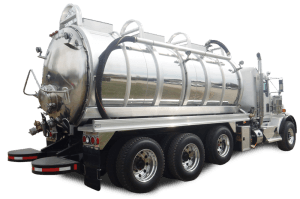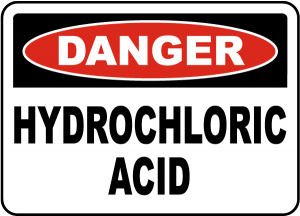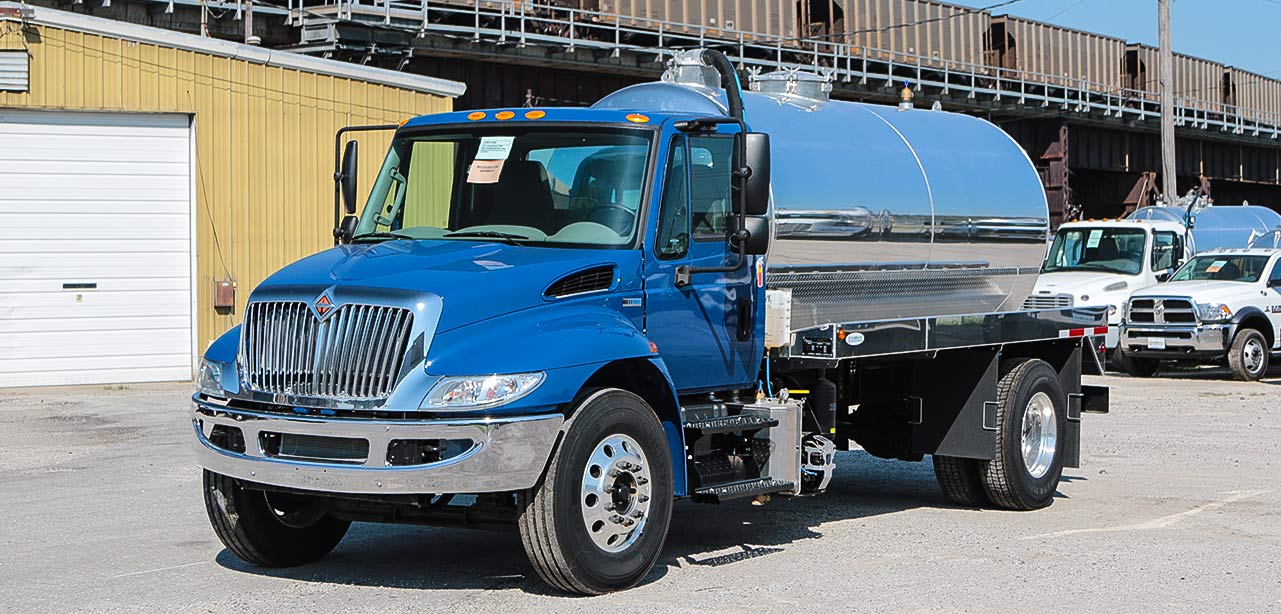Six years ago in British Columbia, oil and gas field service workers were unloading liquid hazardous waste from a pup tank into an open hopper at a hazardous waste processing facility. The pup tank was connected to a vacuum truck. Flammable gas and vapor were released into the atmosphere and were able to enter the truck engine’s air intake system.
Because the truck’s engine had been left running, the concentrated airborne gas and vapor ignited and caused a flash fire. One worker suffered serious burn injuries.
Vac Truck Industries
Vacuum trucks are used extensively in the oil and gas industry to clean up and carry waste material. These products, often hydrocarbons, can release hazardous vapors and gases, and the off-gases can cause unconsciousness, serious injury or death. Stringent procedures must be put in place aimed at ensuring trucks are well maintained and operators are not only thoroughly trained but also understand the importance of constant vigilance to changing environmental conditions.
Vacuum trucks are tank trucks equipped with a high-powered vacuum pump that sucks up solids, fluids, sludge or slurry at high speed through a hose. In the oil patch, their central task is to clean up waste — contaminated soil and water, pipeline spills or the residue settled out at the bottom of a tank, which may include sand or paraffin wax — and transport it to a disposal site.
Another major use is hydro-vacuuming – the use of pressurized water to excavate and evacuate soil. In the oil industry, most vacuum trucks, called “combo vacs,” are equipped with hot water pressure washers that use steam to clean equipment, wash well heads, wash out tanks and clean up spills. Others also have a scrubber mounted to the truck. The scrubber, a dry granular substance, reacts chemically with hydrogen sulphide (H2S) and “scrubs” the explosive gases out of a product.
Enjoying our insights?
Subscribe to our newsletter to keep up with the latest industry trends and developments.
Stay InformedA Range of Hazards
Vacuum truck operators in the oil and gas industry face a range of hazards, said Budd Phillips, manager of prevention field services for Fort St. John at WorkSafeBC. One of the biggest risks is exposure to toxic gases. Workers are handling liquids that are toxic and corrosive, and dangerous fumes are released from the liquid waste of oil and gas wells as it is sucked up into the truck. One such gas is H2S, which in low levels can cause eye irritation, nausea and dizziness and in high levels can cause unconsciousness or death.
Sometimes a chemical unexpectedly mixes with another to produce a harmful substance. For example, when hydrochloric acid is added to the residue of other products in a tank it can release fumes, which can be lethal.
Many of these vapors are also highly flammable and can produce fire or explosions. Combustible gases sometimes build up around vacuum operations. In other cases, product loaded in the truck may release flammable gases due to agitation during transportation.
“Then, when you go to dispose of it, you open up the hatch and you pour it out. If it’s not a controlled scenario with proper monitoring and the truck shut off, fires and explosions can occur,” Phillips said. “We’ve seen some catastrophic injuries where workers suffered life-altering burns from explosions when they were operating vac trucks.”
Other Dangers
Moreover, workers who must go inside oil tanks to clean them are essentially entering a confined space, which is particularly hazardous because of possible toxic chemical residue. Vacuum truck work often requires people to work with substances under pressure: If a suction line carrying a hazardous product ruptures, any workers standing nearby may be sprayed.
Other risks stem from the need to work with hot water, which can leave workers burned or scalded. Vac truck operators also contend with extreme weather conditions and, because work continues around the clock, they often work in the dark with limited lighting.
The tanks on the trucks themselves can also be dangerous, Phillips said. The very large, heavy lids can hurt and crush workers. Drilling rig work involves long hours, so operators need to stay attentive to hours of service and avoid fatigue. Finally, driving presents risks.
“One of the highest risks in the oil and gas industry is driving from one workplace to another,” he said.
Maintaining a Safe Vac Truck
Vacuum trucks require constant vigilance around maintenance to make sure truck equipment – valves, couplers, vacuum and conductive hoses and tank pressure and temperature gauges — are in proper working order.
Overheating
A particular problem in a vacuum truck is parts overheating, said Marvin Ferriss, manager at Three Star Trucking, a crude oil transport company. When you run a vacuum pump, the compression of air creates a great deal of heat. The operator must ensure there is continuous flow through the vacuum system to keep it cool.
“If the flow goes static, you can actually create enough heat to cause an explosion. You have to consider that all the time,” Ferriss said.
Emergency Valves
Operators must also watch and maintain two other systems. One is the emergency valves.
“You’re hauling dangerous goods. All the valves on the truck are self-closing, so if there’s an incident where you hit something or there’s a rollover, the valves all close by themselves. You have to maintain that system,” Ferriss said.
Shutdown System
The other system to watch carefully is the positive air shutdown system, required by the gassy atmosphere as well as the diesel engine.
“Your atmosphere itself could become the fuel. And if the engine gets a big gulp of this gas, it can run away and explode. So you have to maintain that system. Test it regularly to ensure it works,” Ferriss said.
Trucks must also have proper placards in place to disclose what they’re carrying.
“That way, any emergency personnel who have to respond know by the coding what is onboard the truck and what precautions they need to take,’’ Phillips said.
Vac trucks should be cleaned off regularly to get rid of oils, mud and paraffin wax that can impede the proper functioning of parts. The tank interior should be flushed out and kept clean of materials that could react with newly added waste liquids.
Prior to each job, operators should inspect the tank and pumping equipment to ensure they are in good condition.
Training and Safe Procedures
Phillips said workers need first to understand the hazards of operating a vacuum truck — including toxic vapors, ignition sources and fires and explosions — and be trained in procedures to safely handle the product, including proper methods of venting vacuum pump exhaust vapor.
Operators should be familiar with their trucks and how they operate and know the limitations on what they can pick up and safely handle, Phillips added. They should understand proper maintenance and inspection procedures as set out by the manufacturer. Knowing how to drive safely with hazardous products and knowing not to drive when fatigued or impaired is important, too.
Workers must be trained in proper evacuation and rescue procedures if there’s a toxic gas leak. In case workers are exposed to toxic gas, first aid should be available nearby.
Before, and sometimes during operations, there should be continuous monitoring of air quality at areas where there may be toxic gases or hydrocarbon vapors in the flammable range, such as the discharge area of the vacuum truck venting hose. It is also important to monitor tank temperature gauges – to identify chemical reactions – and tank pressure gauges to ensure correct pressure in receiving tanks and supply tanks. Tank level indicators should be monitored to avoid overfilling the tank.
Proper Disclosure
One critical safe procedure that operators must follow is the requirement for proper disclosure, Phillips said. Sometimes, clients do not reveal the nature of the hazardous waste.
Supervisors must provide vacuum truck operators and their assistants (swampers) with the appropriate personal protective equipment for the task, which may include hard hats, safety glasses, boots, impact gloves, hearing protection and fall protection. Appropriate equipment will depend on the safety data sheet for the product being carried. When using the hot water washer, workers need to guard against steam by wearing rain suits, rubber gloves, eye and hearing protection, face shields and rubber boots, Ferriss says.
Operators and swampers required to enter oil tanks must be equipped with a supplied air unit and a lower explosive limit monitor for H2S, he added. They should also be wearing a harness with a lanyard in case they need to be pulled out.
A job site analysis (JSA) is also a valuable tool for identifying hazards related to a specific job or work tasks.
Opeators need to be engaged in what’s going on.
“A huge portion of the day should be spent on making sure everything is looked at before it happens, not dealing with it when it does”, said Greg Campkin of Capital Pressure.
(from Occupational Safety)

























I WANNA KNOW HOW ITS IMPORTANT TO PROVIDE OIL VACUME TRUCKS WITH FLAME ARESSTORS ON TOP OF THE EXHAUST PIPES.
It’s cool that vacuum trucks have emergency valves that close on their own if it rolls. My boss has been telling me about how he needs some vacuum trucks for a project that he’s been working on recently. I’ll share this information with him so that he knows more about them.